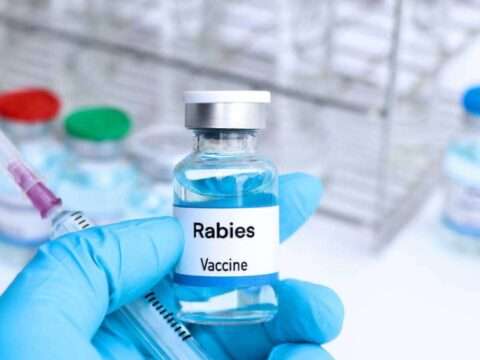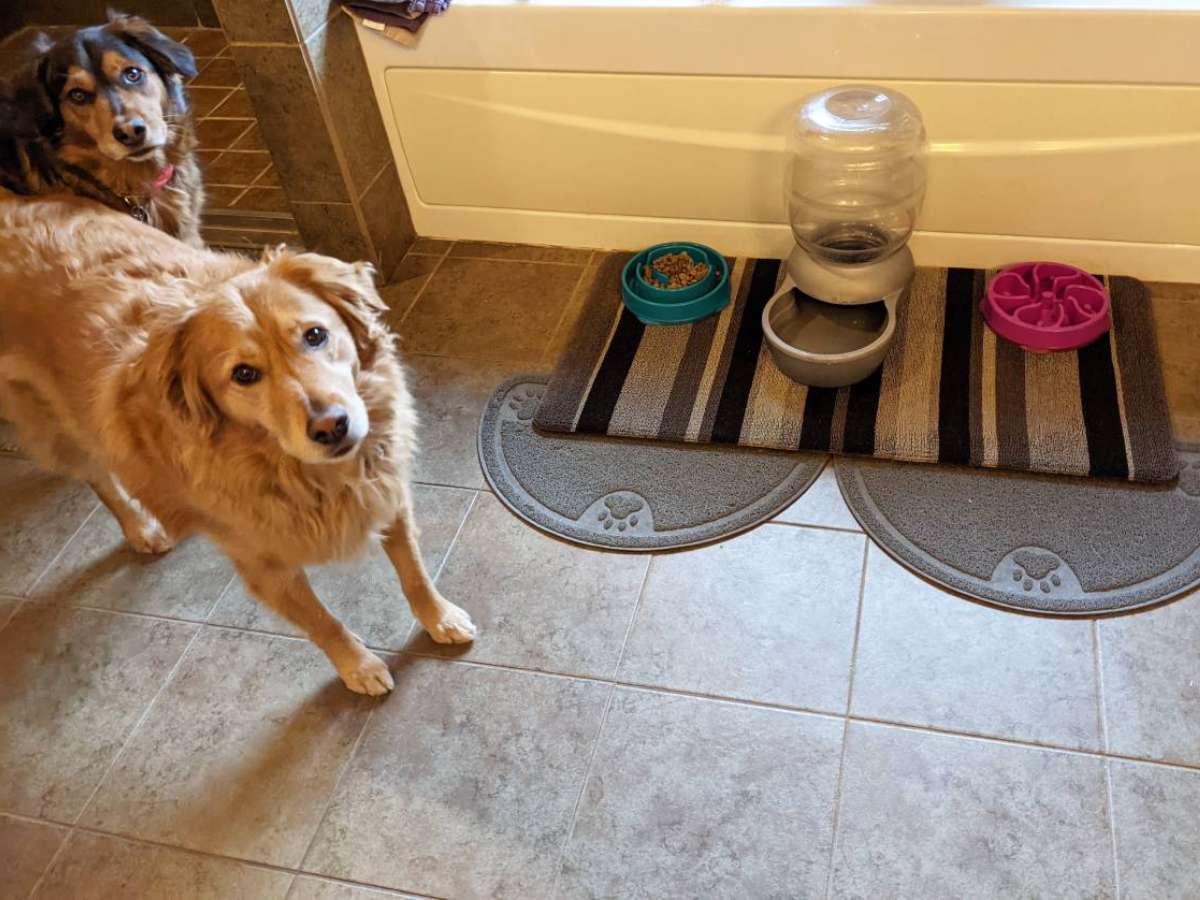Dog Rabies Vaccine Facts & Laws
All states in the U.S. have laws in place requiring dogs to be immunized to prevent the spread of Rabies.
All U.S. states have removed the 1-year requirement for Rabies vaccinations, allowing for a 3-year Rabies vaccination instead. In 2009, Alabama became the last of the 50 states to enact a law allowing pet owners to vaccinate their dogs for Rabies every 3 years rather than requiring an annual Rabies shot.

The convenience of taking your dog to the vet for a Rabies shot only once every 3 years offers a nice savings, as veterinarian office visits are rapidly approaching the cost of taking your own kids in for a doctor’s visit.
Are Annual Dog Vaccinations & Pet Wellness Check-ups Really Necessary?
These are the biggest questions that most dog owners have about the Rabies vaccination:
- Which Rabies injection is better for your dog?
- Is there a different formula used in the 3-year Rabies vaccination?
- Is the quantity of drug being injected larger and, therefore, potentially more dangerous for your dog?
These are all legitimate concerns that we will explore in this article.
1-Year vs. 3-Year Rabies Vaccine Differences
Here’s a shocker for you…
The actual 3-year Rabies shot contains the same drug and is given in the same amount as the 1-year Rabies shot.

The only difference is the label on the bottle indicating 1-year vs. 3-year.
It’s done that way purely to satisfy rabies state laws. Some of the bureaucrats just haven’t caught on that research has shown one single Rabies vaccination can provide protection for a number of years.
Research is currently being done to verify a dog’s protection from Rabies over periods as long as 5 to 7 years.
Rabies Vaccination Schedules
For the purpose of convincing pet owners to return for a booster shot with young dogs, the first Rabies vaccination should take place at 4 to 6 months, followed by an annual Rabies booster. This will build up antibodies to protect the dog rather quickly.
However, because a dog’s immune system takes time to build up a response to the Rabies vaccine, your dog will not be (legally) considered vaccinated against Rabies until 28 days after receiving their first Rabies vaccine, regardless of age.
After that first annual shot, you can then move on to a 3-year Rabies vaccination schedule.
Even though the Rabies shots are essentially the same, simply being labeled a 1-year shot will place the animal in a noncompliant status as far as the state is concerned (when that year has passed). To again be considered protected (according to the state), your dog will need another Rabies vaccination, and then repeated Rabies vaccinations every 3 years thereafter.
A dog is no longer current on their Rabies vaccination if it is even 1 day past due for a booster.
Is The Rabies Vaccination Safe?
The Rabies vaccine does come with some risks. There is a potential for serious life-threatening allergic reactions that you should be aware of.
If your dog is breathing heavily, his face is swelling, his eyes are watering, or he’s vomiting, your vet should be notified immediately. These reactions to the Rabies vaccine are indicative of a medical emergency for your dog. Fast action is imperative, as immediate treatment is critical for your dog’s survival.
Other common reactions include agitation or aggressive behavior, skin rashes, digestive disorders and muscle weakness.
Your Dog’s Chances Of Getting Rabies
Did you know the Rabies vaccine is the only immunization that is required by law for pets in the United States?
Because of the extensive Rabies vaccination program, as of 2007 Canine Rabies no longer exists in the U.S.

Of course, dogs can still contract Rabies from other animals living in the wild, though.
Because there is a known chance of some dogs having a severe reaction to the Rabies vaccine, you should be aware that you do have the option of obtaining an exemption from the procedure. You see, veterinarians are authorized to exempt animals from the inoculation in cases where an animal’s current medical condition would indicate a risk to their well-being.
A: Regular wellness examinations (at least once or twice a year) are the most important preventive measure that you can provide for your dog. Vaccinations are just one component of the wellness visit. To help keep your dog in optimum health, regular wellness examinations are critical — regardless of how often vaccines are administered. Remember, dogs age at a much faster rate than humans, so a once-yearly exam is similar to a human getting a physical every 5-7 years. Plus they don’t always show signs of early disease, and they can’t easily communicate discomfort to us.
~ American Animal Hospital Association
FYI: Humans get rabies when they are bitten by infected animals. The rabies virus infects the central nervous system — causing disease in the brain. Human rabies is almost always fatal.



